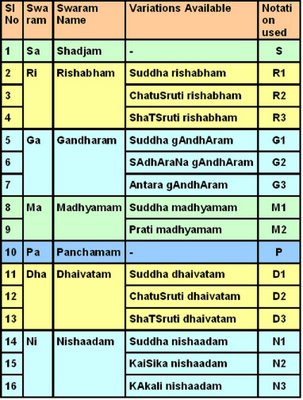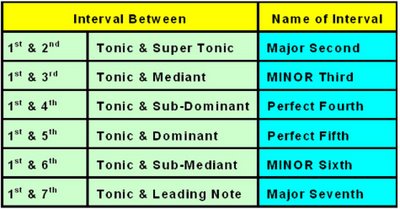Let us recall those conditions:
Sa must be Selected.
Pa must be Selected.
Ma have two variations M1 or M2
- If R1 is selected, we have 3 options for Ga …….as G1 or G2 or G3.
- If we select R2, our choice for Ga is restricted to 2 options……..either G2 or G3 only
(as G1 is ruled out by R2 selection)
- If R3 is selected, our choice for Ga is restricted to 1 option …… G3 only,
(as G1 is crossed and G2 is ruled out by R3 selection)
Similarly
- If D1 is selected, we have 3 options for Ni …….as N1 or N2 or N3.
- If we select D2, our 2 options for Ni is restricted to ……..either N2 or N3 only
(as N1 is ruled out by D2 selection).
- If D3 is selected, our 1 option for Ni is restricted to…… N3 only,
(as N1 is crossed and N2 is ruled out by D3 selection)
Mathematically, the selection process will give a table of 72 basic patterns called “Melakartha Raagam”
To illustrate the typical process, let us analyse the first case and extreme cases of Perumnuation Combination
Formation of the first Pattern will be like this :

To complete octave , C is added back
So the resulting pattern is:
C – C# - D – F – G – G# - A – C
(S R1 G1 M1 P D1 N1 S)
The above pattern is called “Kanakangi” in Melakartha Scheme.
Take the extreme 72nd raagam pattern :

The resulting pattern is :
C – D# – E – F# – G – A# – B – C
( S R3 G3 M2 D3 N3 S )
This is called as “Rasikapriya” in Melakartha scheme.
In between the 1st and 72nd ragam , remaining 70 other patterns of Melakartha scheme are arranged.
I am not burdening you with the exercise of formation of balance Pattern formations ! Once you understand the basic principle, you can do that automatically.
Let us have a glimpse of the 72 raagam as in the Melakartha Table, in our next session.






